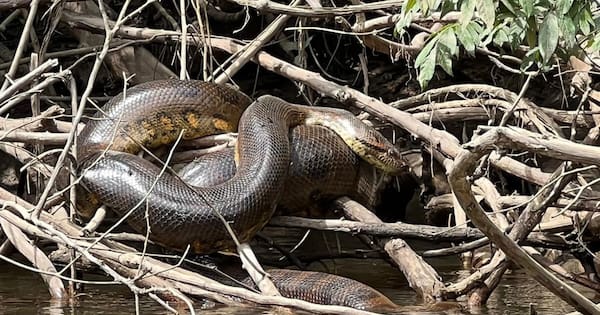Scientists working in the Amazon rainforest have discovered a previously undocumented species of giant anaconda, rumored to be the world's largest snake.
The northern green anaconda was discovered by University of Queensland professor Brian Fry, who led a team that captured and studied several specimens during filming for an upcoming National Geographic series in the Ecuadorian Amazon.
“Our team received an unusual invitation from the Huaorani to explore the region and collect samples from what is rumored to be the largest anaconda population in existence,” he said.
“As we paddled our canoes down the river system, we were lucky enough to spot a few anacondas lurking in the shallows, waiting for prey.”
Fry said the female anaconda his team encountered was 6.3 meters long.
According to Huaorani anecdotes, some anacondas were over 7.5 meters long and weighed about 500 kilograms.
This would make the northern green anaconda the world's largest and heaviest snake.
Experts studying reptiles have also discovered that the northern green anaconda species diverged from its southern counterpart almost 10 million years ago, and are genetically 5.5% different.
“This is very important. To put it into perspective, humans and chimpanzees are only about 2% different,” Fry says.
The Amazon continues to face several ecological challenges that threaten the survival of the species.
“Deforestation in the Amazon basin due to agricultural expansion has resulted in an estimated loss of 20-31% of habitat and could affect up to 40% of the forest by 2050,” Fry said.
“Another growing problem is habitat degradation due to land fragmentation caused by heavy metal pollution associated with industrialized agriculture and mining activities.
“Wildfires, drought and climate change are also notable threats.
“These rare anacondas and the other species that share this remote ecosystem face significant challenges.”

